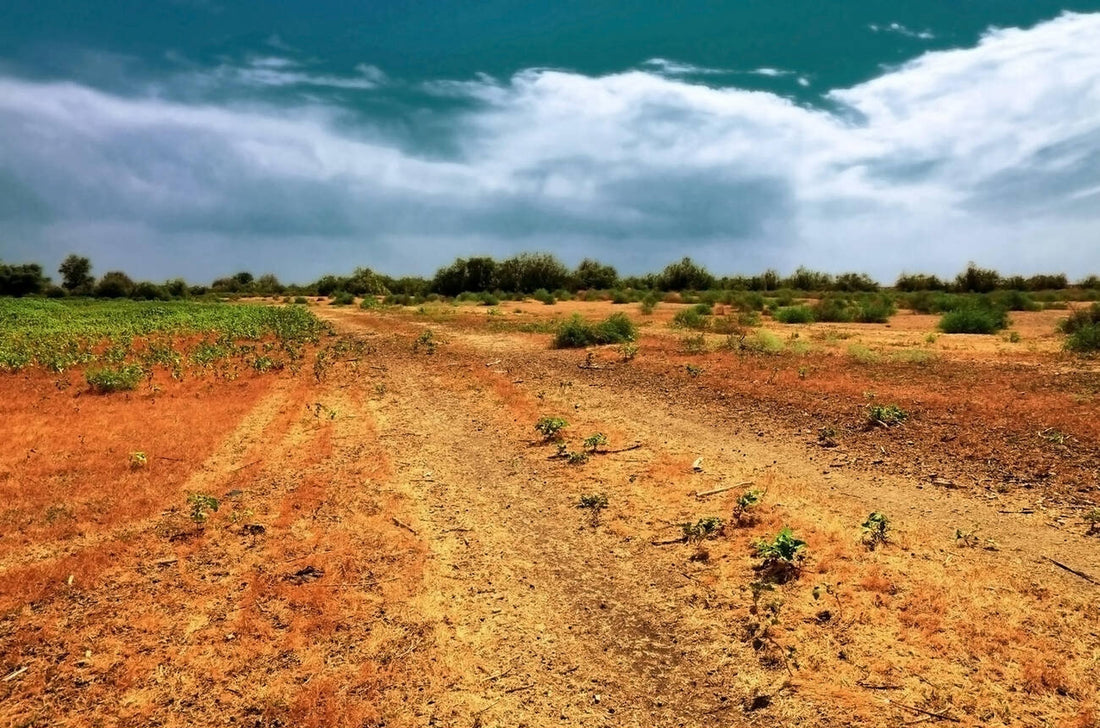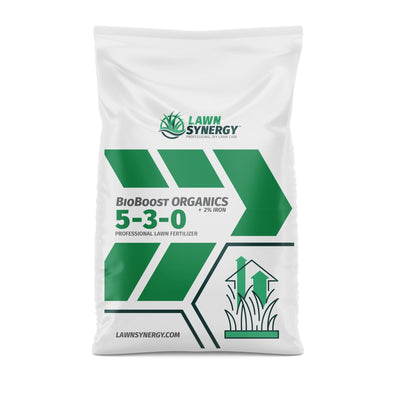Struggling to keep your clay soil lawn lush and vibrant? You're not alone. Clay soil comes with a unique set of challenges, but with the right tools and techniques, a verdant lawn is well within reach. As lawn care experts, we specialize in turning tough terrains into splendid greenscapes.
In this comprehensive guide, we delve into what makes the best fertilizer for clay soil lawn indispensable for achieving a healthy lawn. We'll explore the advantages and disadvantages of clay soil, offering practical advice on how to enhance its condition, and much more.
Our premium lawn fertilizer collection has been expertly formulated to cater specifically to the needs of clay soil, ensuring optimal growth and health. So, if you're ready to transform your lawn into a lush, green paradise, continue reading.
What this article covers:- What Is the Best Fertilizer for Clay Soil?
- How Do You Recognize Clay Soil?
- Advantages of Clay Soil
- Disadvantages of Clay Soil
- How to Improve Clay Soil
What Is the Best Fertilizer for Clay Soil?
Based on our observations, we found that slow-release fertilizers work wonders for clay soil lawns. These fertilizers provide a steady supply of nutrients, allowing plants to absorb them over time without overwhelming the soil.
At Lawn Synergy, we are proud to present the Almighty 20-0-10 Lawn Fertilizer, the best lawn fertilizer for clay soil. This product is specifically designed to meet the unique needs of clay soil lawns. It is high in nitrogen but slow-release, making it perfect for waking up your lawn and providing continuous growth throughout the season.
The 20-0-10 formulation ensures that your lawn gets the essential nutrients it needs without the risk of burning. The added potassium helps in root development and disease resistance, ensuring your lawn stays healthy and vibrant.
How Do You Recognize Clay Soil?
Recognizing clay soil is crucial for choosing the right lawn care strategies and the best lawn fertilizer. Clay soil has a fine texture and feels sticky when wet, much like modeling clay. It holds water efficiently, making it heavy and dense. When dry, it forms hard clumps that are difficult to break apart.
These characteristics can be identified easily by touching and rolling the soil in your hands. If your lawn soil fits this description, you have clay soil. Understanding these properties helps in selecting the appropriate fertilizers and amendments to improve soil structure and promote a healthy lawn.
Advantages of Clay Soil
Contrary to popular belief, clay soil has its perks that make it quite beneficial for gardening and lawn care. Its ability to retain moisture reduces the need for frequent watering, which can be especially advantageous during dry spells.
Clay soil is also inherently rich in nutrients, providing a fertile ground for robust plant growth. However, the dense nature of clay can sometimes hinder root penetration and water drainage. To counter this, incorporating organic matter can significantly enhance its structure.
Speaking of improving clay soil, we've found that using the right type of fertilizer makes a huge difference. Organic fertilizers are particularly effective in enhancing the physical properties of clay by introducing more organic matter into the soil.
We'll explore this further later in the article, but if you're already on the lookout for the best organic fertilizer for lawn, our Organic Lawn Fertilizer 5-3-0 BioBoost offers an excellent solution. It's crafted to enrich clay soil with essential nutrients slowly, improving soil structure and promoting healthier plant growth.

Disadvantages of Clay Soil
Clay soil can be challenging. It drains poorly, leading to waterlogged roots and potential plant stress. This excessive water retention can suffocate roots, preventing them from getting the oxygen they need.
Additionally, clay soil tends to warm up slowly in the spring, which can delay the start of the growing season. It can also compact easily under pressure, making it difficult for roots to penetrate and establish themselves.
This compaction restricts root growth and limits the effectiveness of fertilizers, as nutrients struggle to reach the plant roots. These issues can make managing a lawn on clay soil seem daunting.
How to Improve Clay Soil
Improving clay soil involves a few strategic steps:
Aerate Your Lawn
Regular aeration alleviates soil compaction, allowing air, water, and nutrients to penetrate deeper into the soil. This process helps create a healthier environment for grass roots, promoting stronger and more resilient growth.
Aeration involves perforating the soil with small holes to let air, water, and nutrients reach the roots more effectively. By doing this, it reduces thatch build-up, improves drainage, and enhances the effectiveness of fertilizers.
We recommend aerating your lawn at least once a year, particularly in the fall or spring, to ensure optimal soil conditions. This is especially important before applying the best new lawn fertilizer to maximize its benefits.
Aeration also helps alleviate issues associated with heavy clay soils, making it an essential practice for maintaining a lush, green lawn.

Add Organic Matter
Incorporating organic matter like compost or biosolids can significantly improve soil structure and fertility.
Adding organic matter enhances microbial activity, which helps break down clay particles and improves drainage. This process increases the soil's ability to retain water and nutrients, creating a more favorable environment for plant growth.
Organic matter also attracts beneficial organisms like earthworms, which further aerate the soil and enhance its health.
Gypsum is also another product that greatly helps with clay soils reducing its compaction abilities.
By improving the soil's texture and nutrient content, you enable your lawn to grow stronger and more resilient.
pH Testing
Clay soil often has a higher pH, which can impact nutrient availability for your lawn. Conducting a soil pH test is crucial to determine the current pH level and to make necessary adjustments.
To test the soil pH, you can use our soil testing kit or send a sample to a local extension service. If the pH is too high (alkaline), applying sulfur or iron sulfate can help lower it, making nutrients more accessible to your lawn. Our soil testing kit will also identify other nutrients deficiencies and provide other soil insight.
Conversely, if the pH is too low (acidic), adding lime can raise it to the desired level. Adjusting the pH ensures that your lawn can absorb the essential nutrients it needs for healthy growth.

Conclusion
Choosing the right fertilizer and improving soil conditions are essential to maintaining a healthy clay soil lawn. At Lawn Synergy, we recommend using slow-release fertilizers, aerating regularly, and adding organic matter to enhance soil structure. Conducting regular pH tests and making necessary adjustments ensures optimal nutrient availability for your lawn.
If you're looking for more tips and practical advice for lawn care, such as the best weed and feed for lawns, or how to care for your lawn in different climates, check out our articles on the best lawn fertilizer for Texas and the best lawn fertilizer for Florida.
At Lawn Synergy, we are dedicated to helping you achieve the lawn of your dreams with our expert advice and premium products.
If you want to learn more, why not check out these articles below:
- Best Iron Fertilizer for Lawn
- Best Lawn Fertilizer for Sandy Soil
- Best Way to Grow Grass
- Best Weed and Feed for Bermuda Grass
- Best Fertilizer for Yellow Grass
- Best Fertilizer for Bahia Grass
- Best Fertilizer for Tall Fescue Grass
- Best Weed and Feed for St. Augustine Grass
- Best Fertilizer for Centipede Grass in South Carolina
- Best Grass Seed Fertilizer
- Best Fertilizer for Mondo Grass





